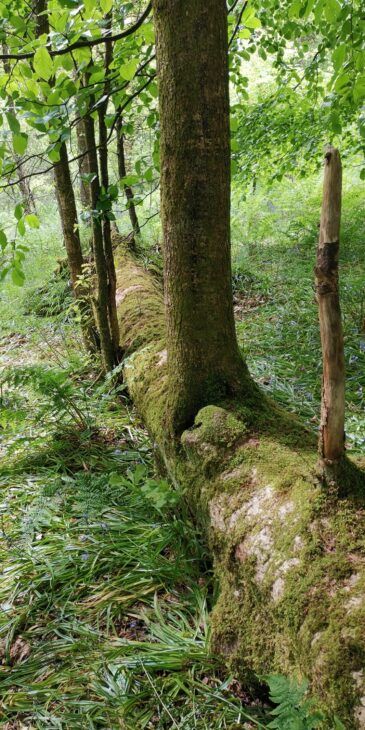Phoenix trees
,
Some time ago, while in the Scottish Wildlife Trust’s amazing Cumbernauld Glen reserve, I learned about a new type of tree – not a new species, but one with a new way of living.

Walking through the woods I came across a fallen tree. Even knowing the value of dead wood to wildlife I still can’t help feeling sad when I see an old forest giant lying like this, the thick, gnarled trunk dug into the ground, its shattered branches splayed around, roots pointing skywards showing where the wind had torn it from the Earth.
I was contemplating this when I noticed the tree wasn’t actually dead. Growing up from the trunk, in a perfect line, were living branches, each of which had formed into a perfect young tree. Some of the old giant’s roots were still in the ground, still pumping up water, energy and life.
Trees like this are known as phoenix trees. They will live on as the young trees rise anew from the old.
I was reminded of this recently when I had a bit of a setback, I ‘fluffed’ a presentation in front of a room full of people, got myself tongue tied, confused and embarrassed. Two years ago that would have been a major problem, requiring weeks of effort to overcome the self-doubt and self-destructive thoughts that would follow.
Now, equipped with the tools that spending time looking after my mental well-being in the outdoors brings, I know that falling down is just part of life, and that, just like a phoenix tree, we can all find ways to pick ourselves up and carry on. If you’d like to learn how nature can help you, then you can join us on our regular Wild Ways Well walks.
Paul Barclay
Project Officer Green Health and Wellbeing
